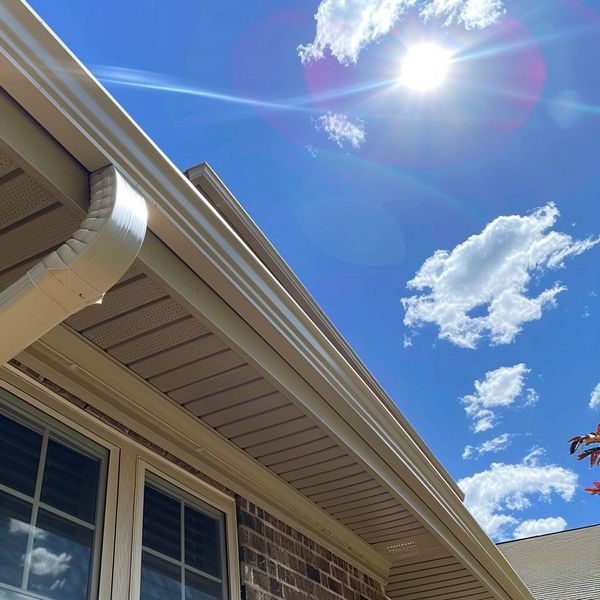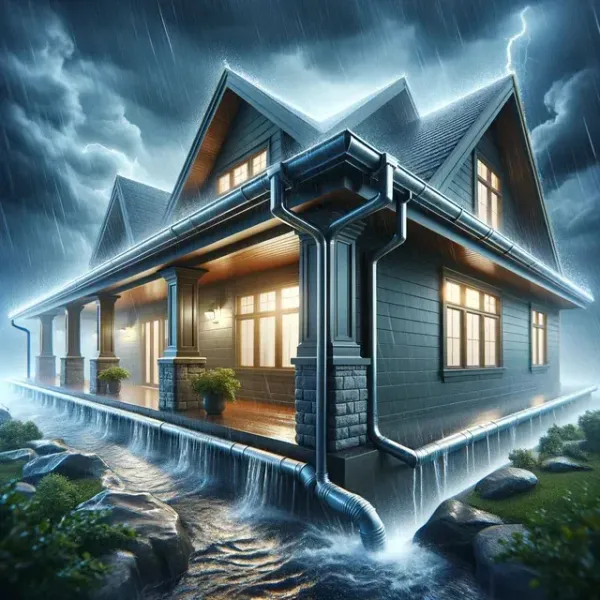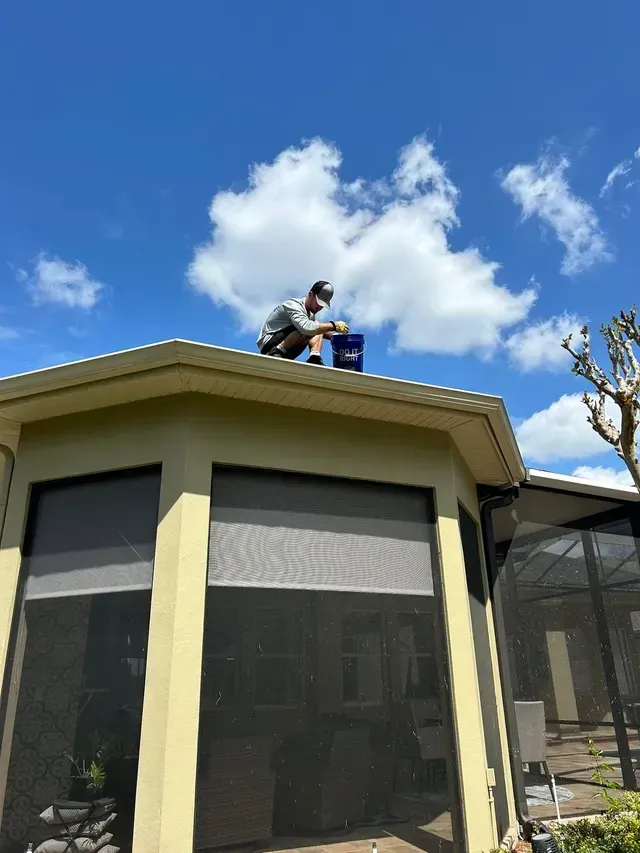Introduction
Siding is an essential part of any home, serving both aesthetic and protective functions. However, without proper gutter maintenance, that siding can become vulnerable to water damage, mold growth, and a slew of other issues. In this article, we will explore the ins and gutter company outs of gutter maintenance and how it relates directly to preventing siding damage. We’ll cover everything from the gutter installation process to the signs that you need a gutter replacement. Let’s dive deep into the world of gutters so your siding stays safe and sound!
Preventing Siding Damage with Proper Gutter Maintenance
Gutters are like the unsung heroes of your home's exterior. They direct rainwater away from your house's foundation and siding, reducing the risk of water pooling that can lead to serious damage. When gutters become clogged or damaged, they can overflow, allowing water to cascade down your walls instead of draining properly.
Understanding the Role of Gutters in Home Protection
Gutters are designed to channel water off your roof and away from your home’s structure. This function is critical because water has a way of finding its way into even the smallest cracks. Here’s how proper gutter maintenance contributes to preventing siding damage:
- Water Diversion: Gutters move water away from your home's foundation, reducing soil erosion. Siding Protection: By redirecting rainwater, gutters prevent moisture buildup on siding materials. Mold Prevention: Properly functioning gutters minimize mold growth by keeping moisture at bay.
In essence, without well-maintained gutters, homeowners risk significant expenses in repairs not only for their siding but also for foundations and roofs.
The Gutter Installation Process Explained
Before you can maintain your gutters effectively, it’s crucial to understand how they’re installed in the first place. The installation process typically involves several key steps:
Measuring: Accurate measurements ensure that gutters fit perfectly along eaves. Choosing Materials: Options include aluminum, copper, vinyl, and steel. Cutting: The gutters are cut to size based on measurements. Mounting Brackets: These are secured onto the fascia board at regular intervals. Attaching Sections: If using sectional gutters, they are connected using joints; seamless options require special machinery. Downspouts Installation: Downspouts are attached at strategic points for effective water flow.By understanding this process, homeowners can better appreciate what goes into a quality gutter system and make informed decisions when choosing installers.
Signs You Need a Gutter Replacement
Knowing when it’s time for a gutter replacement is crucial for maintaining both your gutters and your siding. Here are some signs that indicate it's time for new gutters:
- Cracks or Holes: Water leaking through cracks can damage siding. Sagging Gutters: If gutters sag under weight or don’t line up properly, they may need replacing. Rust or Corrosion: Rusty metal gutters lose functionality quickly. Frequent Clogs: If you find yourself cleaning them out constantly despite maintenance efforts.
Keeping an eye out for these signs can save you from extensive repairs down the road.
Choosing the Right Gutter System for Your Home
When it comes to selecting the ideal gutter system for your home, various factors come into play:
Material Options:- Aluminum: Lightweight yet durable; resistant to rust. Copper: Offers aesthetic appeal but comes at a premium price. Vinyl: Budget-friendly but less durable than metals.
- K-style: Flat-bottomed with decorative edges; popular choice among homeowners. Half-round: Semi-circular shape that's often seen on historic homes.
- Seamless systems reduce leaks but require professional installation. Sectionals are easier to DIY but may lead to more clogs.
Choosing wisely ensures longevity and efficiency in preventing siding damage.
How Long Does Gutter Installation Take?
On average, gutter installation takes between 1 to 2 days depending on several factors:
- The size of your home The type of materials used Weather conditions
Larger homes or those requiring complex configurations may take longer due to increased labor needs.
Gutter Installation Costs Broken Down
Understanding what affects gutter installation costs helps you budget accurately:
| Cost Factor | Estimated Cost Range | |-----------------------|-------------------------| | Material Type | $3-$30 per linear foot | | Labor | $60-$100 per hour | | Additional Features | $50-$300 (guards/leaf) | | Clean-Up Fees | $50-$150 |
Being aware of these costs allows homeowners to plan their finances accordingly while ensuring their siding remains protected.
DIY Gutter Installation vs Professional Install
When deciding whether to tackle gutter installation as a DIY project or hire gutter company professionals, consider these factors:
Pros of DIY
- Cost savings on labor Flexibility in scheduling
Cons of DIY
- Risk of improper installation leading to future problems Lack of access to specialized tools
Pros of Hiring Professionals
- Expertise ensures correct installation Warranty coverage for workmanship
Cons of Hiring Professionals
- Higher overall cost
Weighing these pros and cons helps determine which route is best suited for you.
What to Expect During Gutter Replacement
If you're replacing old gutters with new ones, here's what you might expect during this process:
Initial Assessment: A professional will evaluate existing conditions. Removal: Old sections will be carefully taken down without damaging surrounding structures. Installation Preparation: The area will be cleaned up in preparation for new installations. Final Inspection & Clean-Up: Ensure everything is functioning correctly before wrapping up.Being prepared mentally and physically makes this transition smooth!
Local Building Codes for Gutter Installation
Every locality has different regulations regarding gutter installations; knowing these codes is essential:


Check local ordinances before starting any work. Understand requirements related to downspout positioning—especially concerning drainage away from foundations.
Failing to comply could result in fines or issues during future property sales!
Installing Gutters on Metal Roofs
Metal roofs can require unique considerations when installing gutters due to their slope and material characteristics:
Use specific brackets designed for metal roofs which allow proper alignment without causing leaks. Ensure downspouts are adequately placed—especially if there are valleys where rainwater collects heavily.These considerations help maximize performance while protecting both roofing systems and sidings alike!
FAQs about Gutter Maintenance
Q1: How often should I clean my gutters?
A1: It's advisable to clean your gutters at least twice a year—once in spring and once in fall—to prevent clogs that could lead to overflow issues affecting your home’s foundation and siding.
Q2: Can I install gutter guards myself?
A2: Yes! Many homeowners successfully install gutter guards themselves; however ensuring proper fitment is crucial so consult guides specific for each product type before proceeding!
Q3: What materials are best for my climate?
A3: Aluminum works well in most climates due its resistance against rust whereas copper offers excellent longevity albeit higher upfront costs—choose based on weather patterns prevalent where you live!
Q4: Do I need permits before installing new gutters?
A4: Depending on local laws governing home modifications including drainage systems—yes! Always verify with city officials prior moving forward with installations!
Q5: What should I do if my downspouts keep clogging?
A5: Consider extending them further away from the foundation or investing in high-quality leaf guards which help mitigate debris getting trapped inside while still allowing free-flowing drainage!
Q6 : How do I know if my existing system needs repair rather than replacement?
A6 : Look out for sagging sections , holes forming around joints , excessive rust present – if found contact an expert who can give reliable advice suited specifically towards each situation !
Conclusion
Proper maintenance of your gutters plays an integral role in preserving not just their functionality but also protecting essential components like siding from potential damages caused by overflowing water runoff . From understanding installation processes , recognizing replacement signs , evaluating appropriate systems tailored towards individual needs right through upkeep routines —every aspect connects back towards safeguarding investments made within one’s home .
By staying proactive about maintaining those vital channels directing rainfall efficiently away from structures below , you'll significantly reduce risks associated with costly repairs later on . So roll up those sleeves , grab those tools (or call up trusted pros!), ensure routine checks remain part & parcel within monthly schedules – thereby securing peace-of-mind knowing all bases covered against nature's whims!
